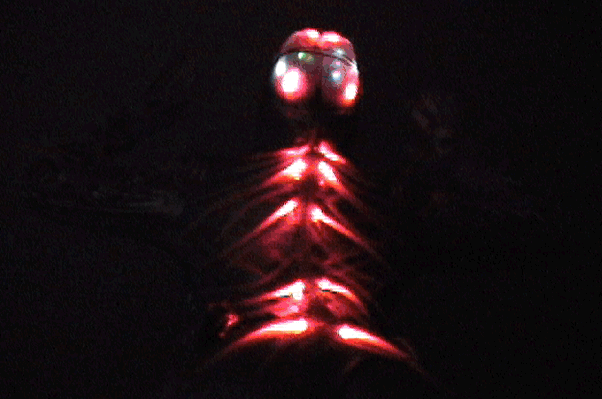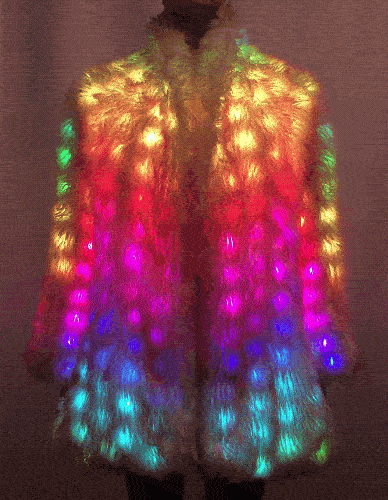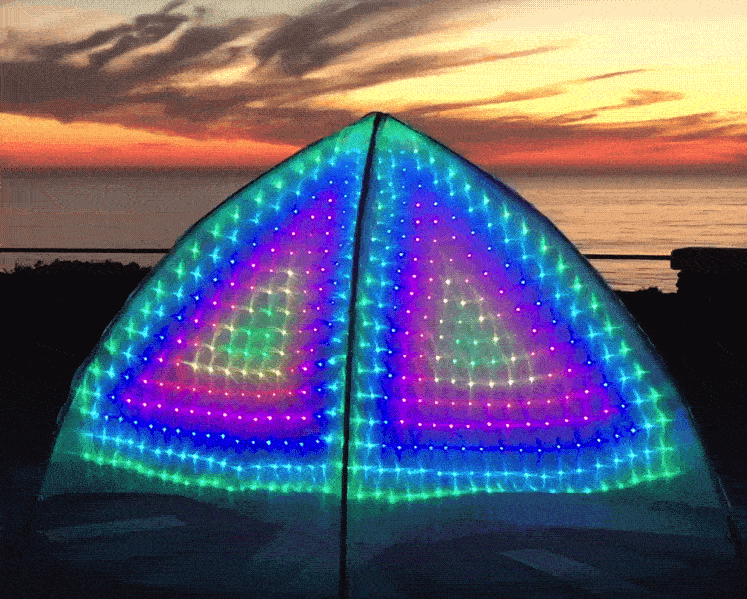Janet Hansen is the Founder and Chief Fashion Director of Enlighted, Inc. Her business focuses on adding lights to clothes to create novel designs that can change patterns and colors on-the-go. However, Hansen’s path to owning this company was not what one might expect. She originally started off as a Ph.D. in Bioengineering where she worked on understanding the structural properties of red blood cell skeletons. She also worked as a rocket scientist for a number of years before applying her engineering skills to fashion.

Hansen in a Enlighted faux fur jacket 
Hansen in a Enlighted coat
One of Hansen’s earlier works leveraged her experience with biological concepts, in which she made a representation of the nervous system for the Burning Man Festival. The theme for the year was “body”, and Hansen’s work showed a stylized version of nervous system impulses as a series of lights on a person. The lights were made from several single-color LEDs that were powered at different times to give the illusion of motion. The lights were embedded in a silicone “nerve” to make the light take on an organic shape as it pulsated across the body.

In contrast to the single-color LEDs, RGB LEDs can be programmed to take on any color. This is what Hansen took advantage of in her piece titled “Nicholas’s Amazing Technicolor Dreamcoat”. This Coat used several hundred individually adressible RGB LEDs to be able to program different moving effects across the coat. The coat itself was made from a faux fur that is dyed hot pink toward the tip. The fur helps to diffuse the lighting resulting in a less sharp point of light and a softer glow. To select different patterns across the pixels of the jacket, there is a switch controller that is carried in the pockets of the jacket.
Hansen also does several requests for celebrities who are trying to build parts of their performances with this lighted aesthetic. Hansen applied her engineering and fashion skills to aid in Britney Spears’s Femme Fatale Tour, in which Hansen developed dresses and harnesses for Britney Spears and the backup dancers. These pieces again used many RGB LEDs that were programmed, but this time the pieces communicated with each other to form cohesive patterns among the different components of the show. The batteries were mainly stored in the shoulder pads or in pockets on the backs of the leather harnesses for the backup dancers, depending on the way the costume was constructed.

Lightning Mode 
Fire Mode
For Daft Punk, Hansen used a different method of lighting the clothes. TO achieve a continuous line of light as an effect, she used electroluminescent (EL) wire. Again, this costume was made to fit seamlessly into the other visuals surrounding this musical performance. Daft Punk would play an encore, and red lights would flood the stage. At this point, the EL wire was illuminated to give them the appearance of being otherworldly projections. The EL wire was sewn on to a leather jacket, which had the Daft Punk logo emblazoned on the back with red LEDs. The costumes ended up getting put on display at the Grammy Museum in LA as part of an exhibit.
In terms of other applications of lights in materials, Hansen also explores installation pieces, like the “Escape Pod” that was made for Youtopia in 2017–a small Burning Man Type festival in California. This installation is a hexagonal tent that has hundreds of programmed RGB LEDs installed between layers of sheer material. The sheer material provides a diffusion layer for the LEDs to make the tent seem alive. Once inside the tent, the observer is copmletely engulfed by colors. This immersion can be used as a kind of color therapy as the observer of the piece attempts to escape from the struggles of daily life.
While she doesn’t explicitly state her motivation for the work she does, it is clear that Hansen has a knack for turning the mundane objects we interact with in daily life to beautiful displays. She uses her expertise in engineering to produce new forms of visuals where she uses light in almost the same way she uses physical fabrics.








